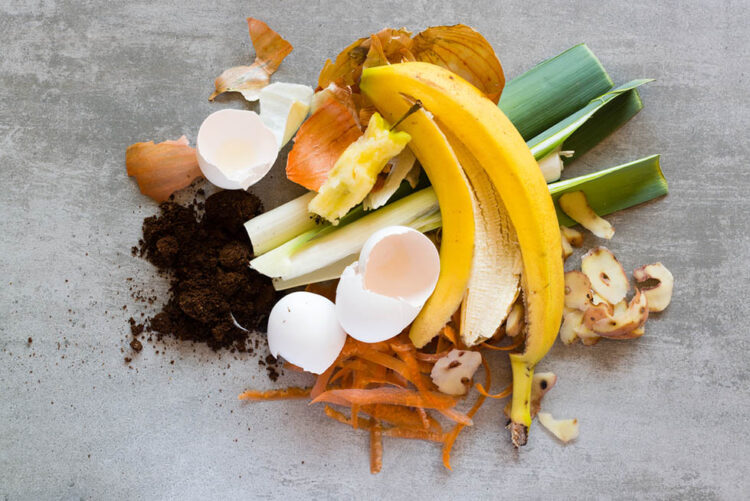The U.S. EPA released a plastics pollution plan that supports steps to reduce production of single-use and difficult-to-recycle plastics. Meanwhile, the agency released data showing the county is moving in the wrong direction on food waste.
The following are details on the two recent EPA announcements.
Draft plastic pollution plan released
EPA on April 21 published a draft of its “National Strategy to Prevent Plastic Pollution,” and the agency is seeking comments on it.
Although it does not include the word “ban,” the 48-page document lays out a number of steps to reduce plastic pollution, including addressing impacts during plastic production and post-use material management, including preventing plastic from entering waterways and cleaning up the material that’s already in the environment.
Of course, boosting collection and recycling factors heavily in the plan, but EPA also touched on a point of sharp contention: reducing plastic production.
In a section focused on reducing “production and consumption of single-use, unrecyclable, or frequently littered plastic products,” the EPA suggested a number of steps should be taken.
Specifically, the agency called for creating a list of these products and alternative materials, then sharing it with public and private entities around the country so they can use it in their purchasing decisions. And EPA called for the setting of a new national voluntary goal to reduce production of the items on the list.
“This new goal would help galvanize action across the country, support and promote the use of alternative products and reuse programs,” the plan states.
Additionally, EPA called for the federal government to create a plan to reduce federal procurement of single-use, non-recyclable/difficult-to-recycle and often-littered plastic products. It suggested an innovation challenge to encourage development of alternative products.
Lastly, the EPA’s strategy suggested the federal government conduct a study to “identify effective policy tools and approaches to reduce production of single-use, unrecyclable or frequently littered plastic products.”
Environmental and industry groups react
A number of groups have issued public statements in response to the draft. The Ocean Conservancy’s Anja Brandon said it’s “particularly notable to see a commitment to producing fewer single-use, unrecyclable and frequently littered plastic products. Analysis of 35 years’ worth of data from Ocean Conservancy’s International Coastal Cleanup shows that roughly 70% of the most commonly collected items from beaches and waterways across the world are effectively unrecyclable, and of these, nearly half are food- and beverage-related items.”
On the other side of the debate, the American Chemistry Council (ACC), released a statement taking issue with the suggestion of plastics reductions and embrace of alternatives. In that statement, ACC’s Joshua Baca pointed to components of the strategy that “risk sending plastic manufacturing and jobs overseas where plastic is often made with less stringent environmental standards and more greenhouse gas (GHG) emissions.”
“We caution the Administration that prescribing alternative materials, capping plastic production or limiting innovative recycling technologies could work against its climate objectives as plastic almost always has a lower life cycle GHG footprint compared to paper and metal,” he added.
EPA will hold a webinar on the draft strategy from 1-2 p.m. Eastern time on May 11.
Food waste data unveiled
In other EPA news, the agency published data showing the country is moving in the wrong direction when it comes to the federal government’s food waste reduction goals.
The EPA aims to cut in half the amount of food that never makes it into a human’s mouth and is instead composted, digested, landfilled, sent to the sewage treatment plant, burned, littered or otherwise wasted under the agency’s definition. Specifically, the agency is looking at the food retail/service and residential sectors, not any food that’s wasted in the agricultural sector.
In 2016, those sectors wasted 328 pounds per capita. EPA’s 2030 goal is to halve that to 164 pounds per person. But according to the newly published “2019 Wasted Food Report,” the U.S. averaged 349 pounds per capita in 2019. That was up from 335 pounds per capita in 2018.
That means that between 2016, the baseline year, and 2019, per-capita food leaving the human food supply chain in the food retail, food service and residential sectors increased by 6%.
“The U.S. has a long way to go to meet [the 2030] goal,” the report notes.
In terms of overall weight, in 2019 those sectors generated 66.2 million tons of food waste. Of that, 40% was from households, 40% was from food service providers and 20% was from food retailers. Nearly 60% of all of it was landfilled. It’s important to note that the numbers above don’t just include otherwise edible food but also include peels, bones and other portions that were never supposed to be consumed by humans anyway.
The report also included data on the 40.1 million tons of food waste in the food manufacturing and processing sectors in 2019. Much of that went to anaerobic digestion.























